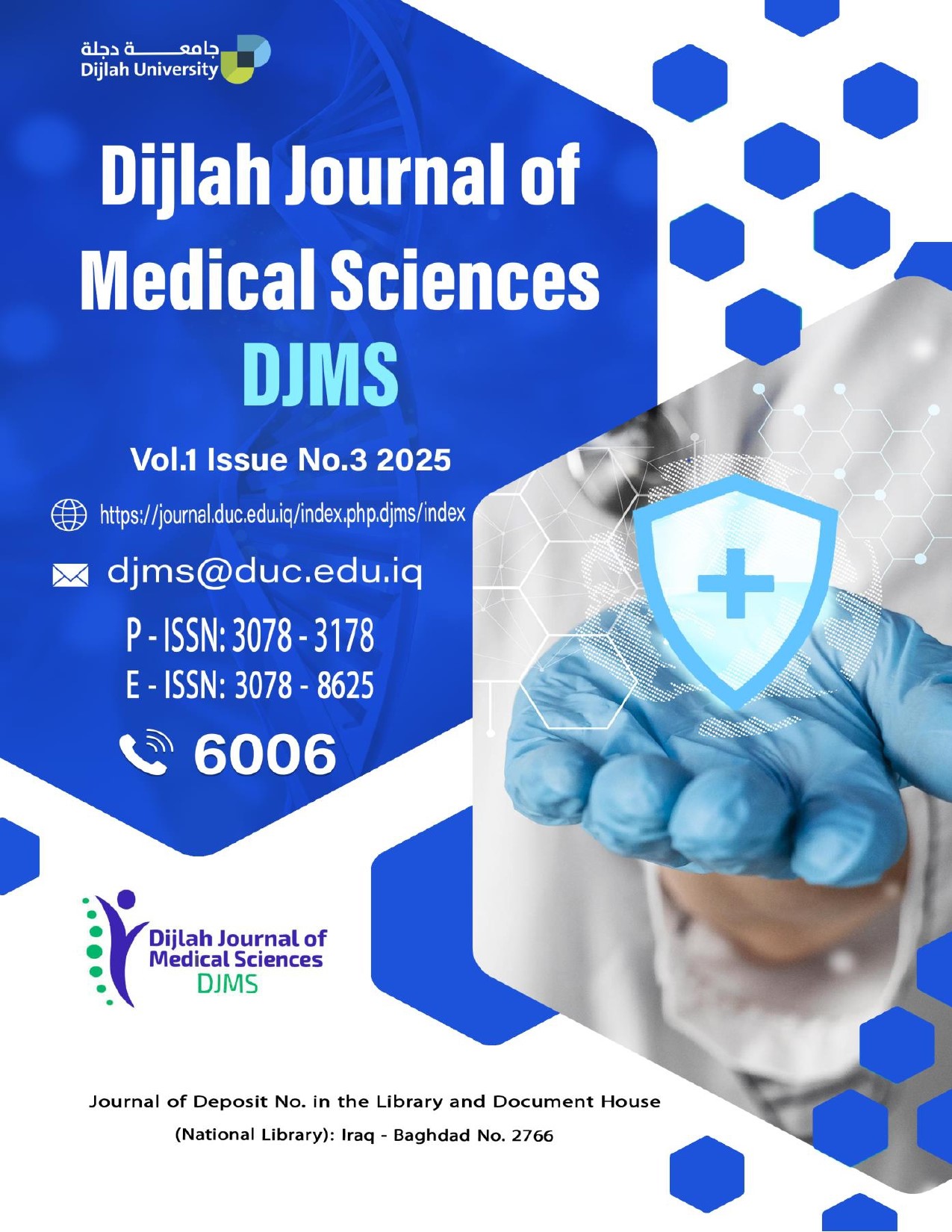pdf Evaluation of Hemoglobin and Some Biochemical Parameters in Patients with Mixed Intestinal Parasitic Infections
Dr. Ahmed Hashim Hameed
DOI:
https://doi.org/10.65204/DJMS-E-H-SBKeywords:
Hemoglobin, Biochemical, Mixed intestinal, Parasitic InfectionsAbstract
Intestinal parasitic infections are prevalent diseases that can lead to various health issues, hindering growth and physical development. Young children, particularly those under five years old, are the most susceptible to these infections. During the period from 1st March to 1st November 2024, (723) stool samples were collected from (419 males and 304 females) with ages ranging from one day to old age persons in Baqubah city. The results showed that prevalence of intestinal parasitic infection was 389 (53.8%) from the total 723 samples. There was no significant difference between positive and negative samples. The intestinal parasitic infections were distributed according to the four age groups as shown in table (2). In the first age group (0-<10) years, the positive rate of male samples was 69 (9.5%) and the positive rate of female samples was 60 (8.3%). In the second age group (10-<20) years, the positive male and female rates were 58 (8.0%) and 64, (8.9%) respectively, in the third age group (20-<30) years, the positive male and female rates were 27 (3.7%) and 47 (6.5%) respectively, while in the fourth age group (≥30) years, the positive male and female rates were 209 (28.9%) and 180 (24.9%) respectively. The distribution of intestinal parasitic infections according to food intake showed that the positive indoor samples were 148 (20.5%), while the outdoor positive samples were 11(1.5%), and the mixed positive samples were 230 (31.8%), with highly significant differences (P<0.01) with regard to hemoglobin levels, it was found that the total number of samples examined to be 295 (40.8%), 80(11.1%), 14(1.9%) for hypo, normal and hyper levels respectively. The level of total serum protein showed that the hypo levels were 289 (40.0%) samples: 73 (10.1%) of them were in the age group (0-<10) years, 102 (14.1%) in the age group (10-<20) years, 51 (7.1%), 63 (8.7%) samples were in the age groups (20-<30) and (≥30) years respectively.

